formerly eScholarship Editions


|
|
|
|
Your request for similar items found 20 book(s). | Modify Search | Displaying 1 - 20 of 20 book(s) | |
| 1. | 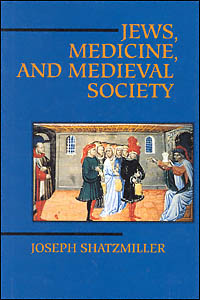 | Title: Jews, medicine, and medieval society Joseph Shatzmiller Author: Shatzmiller, Joseph Published: University of California Press, 1995 Subjects: Jewish Studies | Medieval History | European History | Medieval Studies | Medicine Publisher's Description: Jews were excluded from most professions in medieval, predominantly Christian Europe. Bigotry was widespread, yet Jews were accepted as doctors and surgeons, administering not only to other Jews but to Christians as well. Why did medieval Christians suspend their fear and suspicion of the Jews, allowing them to inspect their bodies, and even, at times, to determine their survival? What was the nature of the doctor-patient relationship? Did the law protect Jewish doctors in disputes over care and treatment?Joseph Shatzmiller explores these and other intriguing questions in the first full social history of the medieval Jewish doctor. Based on extensive archival research in Provence, Spain, and Italy, and a deep reading of the widely scattered literature, Shatzmiller examines the social and economic forces that allowed Jewish medical professionals to survive and thrive in thirteenth- and fourteenth-century Europe. His insights will prove fascinating to scholars and students of Judaica, medieval history, and the history of medicine. [brief] Similar Items |
| 2. | 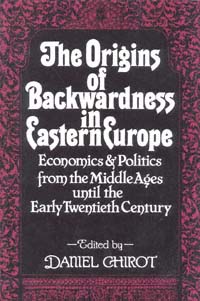 | Title: The origins of backwardness in Eastern Europe: economics and politics from the Middle Ages until the early twentieth century Author: Chirot, Daniel Published: University of California Press, 1989 Subjects: History | European History | Politics | Economics and Business Publisher's Description: Reaching back centuries, this study makes a convincing case for very deep roots of current Eastern European backwardness. Its conclusions are suggestive for comparativists studying other parts of the world, and useful to those who want to understand contemporary Eastern Europe's past. Like the rest of the world except for that unique part of the West which has given us a false model of what was "normal," Eastern Europe developed slowly. The weight of established class relations, geography, lack of technological innovation, and wars kept the area from growing richer.In the nineteenth century the West exerted a powerful influence, but it was political more than economic. Nationalism and the creation of newly independent aspiring nation-states then began to shape national economies, often in unfavorable ways.One of this book's most important lessons is that while economics may limit the freedom of action of political players, it does not determine political outcomes. The authors offer no simple explanations but rather a theoretically complex synthesis that demonstrates the interaction of politics and economics. [brief] Similar Items |
| 3. | 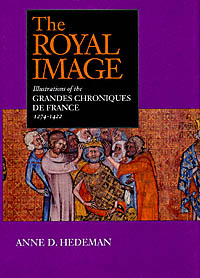 | Title: The royal image: illustrations of the Grandes chroniques de France, 1274-1422 Author: Hedeman, Anne Dawson Published: University of California Press, 1991 Subjects: Art | Art History | Medieval Studies | French Studies Publisher's Description: The Grandes Chroniques de France is a vernacular, frequently illustrated history of the medieval French monarchs. Originally describing the lives of the kings from their origins in Troy in 1274 to the reign of Philip Augustus, it was updated in several stages to the life of Charles VI. Copied and amended for a variety of royal and courtly patrons, approximately 130 of these manuscripts exist today. Anne Hedeman provides the first critical and comprehensive study of the chronicle's illustrations.Hedeman concentrates on the illustrations in twenty manuscripts, analyzing their artistic and cultural significance and offering new methods for studying illustrated manuscripts. She discusses the chronicle in relation to the political ideology of Louis IX, vernacular history, and the Latin chronicle tradition at Saint-Denis. Looking at the manuscripts of various periods, the author compares their representations of historical events, kingship, and individuals in and around the royal court. She also contrasts the styles of several authors and illustrators of the chronicle. The Royal Image includes a catalogue of over seventy-five illustrated manuscripts, and an appendix listing the artists. An additional appendix lists surviving manuscripts. [brief] Similar Items |
| 4. | 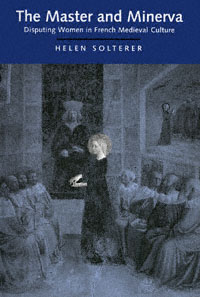 | Title: The master and Minerva: disputing women in French medieval culture Author: Solterer, Helen Published: University of California Press, 1995 Subjects: Literature | European Literature | Literary Theory and Criticism | Medieval Studies | Women's Studies | French Studies Publisher's Description: Can words do damage? For medieval culture, the answer was unambiguously yes. And as Helen Solterer contends, in French medieval culture the representation of women exemplified the use of injurious language.Solterer investigates the debates over women between masters and their disciples. Across a broad range of Old French literature to the early modern Querelle des femmes , she shows how the figure of the female respondent became an instrument for disputing the dominant models of representing women. The female respondent exploited the criterion of injurious language that so preoccupied medieval masters, and she charged master poets ethically and legally with libel. Solterer's work thus illuminates an early, decisive chapter in the history of defamation. [brief] Similar Items |
| 5. | 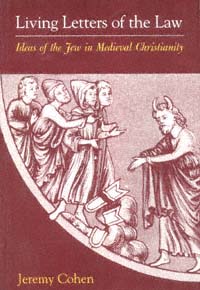 | Title: Living letters of the law: ideas of the Jew in medieval Christianity Author: Cohen, Jeremy 1953- Published: University of California Press, 1999 Subjects: Jewish Studies | Religion | Medieval History Publisher's Description: In Living Letters of the Law , Jeremy Cohen investigates the images of Jews and Judaism in the works of medieval Christian theologians from Augustine to Thomas Aquinas. He reveals how - and why - medieval Christianity fashioned a Jew on the basis of its reading of the Bible, and how this hermeneutically crafted Jew assumed distinctive character and power in Christian thought and culture.Augustine's doctrine of Jewish witness, which constructed the Jews so as to mandate their survival in a properly ordered Christian world, is the starting point for this illuminating study. Cohen demonstrates how adaptations of this doctrine reflected change in the self-consciousness of early medieval civilization. After exploring the effect of twelfth-century Europe's encounter with Islam on the value of Augustine's Jewish witnesses, he concludes with a new assessment of the reception of Augustine's ideas among thirteenth-century popes and friars.Consistently linking the medieval idea of the Jew with broader issues of textual criticism, anthropology, and the philosophy of history, this book demonstrates the complex significance of Christianity's "hermeneutical Jew" not only in the history of antisemitism but also in the broad scope of Western intellectual history. [brief] Similar Items |
| 6. | 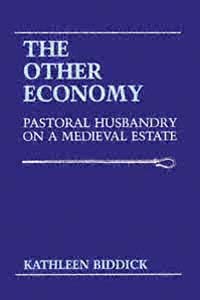 | Title: The other economy: pastoral husbandry on a medieval estate Author: Biddick, Kathleen Published: University of California Press, 1989 Subjects: History | European History | Medieval Studies Publisher's Description: While the cereal agriculture of medieval Europe has been studied exhaustively, the pastoral resources and livestock husbandry of medieval estates have been seriously neglected. Kathleen Biddick's examination of one estate, Peterborough Abbey, during several decades before and after 1100 and the first decade after 1300, brings a new balance to the subject of the medieval economy. Her pioneering methodology and the conclusions she reaches will interest archaeologists and agricultural historians as well as anthropologists, economists, and historians of early European development.Drawing on the archival records of the abbey, an estate that straddled the "classic" open-field agriculture of the English Midlands and the more pastorally-oriented farming of the English peat fens, Biddick describes in great detail how these farmers managed their herds and consumed and marketed livestock products such as meat, wool, hides, milk, and cheese. Commitment to conserving consumption strategies did not mean that the Abbey resisted market involvement and technological innovation. Large numbers of work and cart horses indicate the estate's economic interest in speedy haulage. Cereal yields, where they are calculable, compare favorably to the high-yielding demesnes of parts of Norfolk, the most agriculturally advanced region of medieval England. By showing how the Abbey coordinated its resources to enhance diversity and flexibility, The Other Economy enlarges our understanding of agrarian lordship and political control over resources in the medieval economy. [brief] Similar Items |
| 7. | 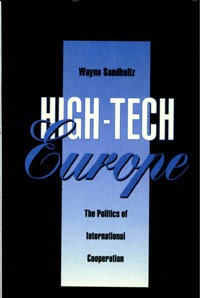 | Title: High-Tech Europe: the politics of international cooperation Author: Sandholtz, Wayne Published: University of California Press, 1992 Subjects: Politics | Public Policy | Economics and Business | Technology and Society Publisher's Description: A study of cooperative efforts in the high-tech industries of Europe. Sandholtz examines why collaboration came late to these countries, how protective walls came down, how countries work together in economically sensitive areas.Governments have recognized for decades the dynamic role played by microelectronics, computers, and telecommunications in the modern economy. Although Europe's deficiencies in these crucial sectors had long been acknowledged, it was not until the 1980s that European nations began collaborating to develop and promote high-tech industries. Their collaboration gives rise to many questions. Why, for example, did the joint efforts come at such a late date rather than in the 1960s or 70s? And how is it possible that they work together in economically sensitive areas? These questions point to fundamental issues in the areas of international cooperation, international institutions, and technology policy.Before the institution of the collaborative programs ESPRIT (European Strategic Programme for Research and Development in Information Technology), RACE (R & D in Advanced Communications-technologies in Europe), and EUREKA (European Research Coordination Agency) in the 1980s, each European country sought its own technological renaissance through protection of national firms behind walls of technical standards, procurement preferences, and research subsidies. Here is a thorough, carefully researched work that examines the breakdown of these walls. It will appeal to political scientists, economists, and scholars of technology and Western Europe interested in the political contours of the high-tech landscape. [brief] Similar Items |
| 8. | 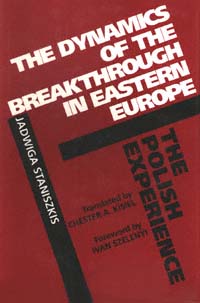 | Title: The dynamics of the breakthrough in Eastern Europe: the Polish experience Author: Staniszkis, Jadwiga Published: University of California Press, 1991 Subjects: Politics | European History | Sociology Publisher's Description: Understanding the dramatic political, social, and economic changes that have taken place in Poland in the mid-1980s is one key to predicting the future of the communist bloc. Jadwiga Staniszkis, an influential, internationally known expert on contemporary trends in Eastern Europe, provides an insider's analysis that deserves the attention of all scholars interested in the region.Staniszkis presents the breakthrough of 1989 as a consequence not only of systemic contradictions within socialism but also of a series of chance events. These events include unique historical circumstances such as the emergence of the "globalist" faction in Mosow, with its new, world-system perception of crisis, and the discovery of the round-table technique as a productive ritual of communication, imitated all over Eastern Europe. After describing the development, collapse, and reorganization of a "new center" in Poland in 1989-1990, she discusses the first attempt at privatizing the economy. Her analysis of the dilemmas accompanying breakthrough and transition is an invaluable guide to the challenges that face both capitalism and democracy in Eastern Europe. [brief] Similar Items |
| 9. | 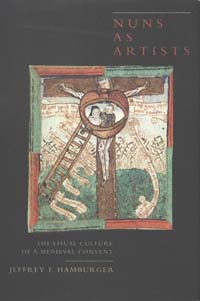 | Title: Nuns as artists: the visual culture of a medieval convent Author: Hamburger, Jeffrey F 1957- Published: University of California Press, 1997 Subjects: Art | Religion | Gender Studies | Art History | Medieval History Publisher's Description: Jeffrey F. Hamburger's groundbreaking study of the art of female monasticism explores the place of images and image-making in the spirituality of medieval nuns during the later Middle Ages. Working from a previously unknown group of late-fifteenth-century devotional drawings made by a Benedictine nun for her cloistered companions, Hamburger discusses the distinctive visual culture of female communities. The drawings discovered by Hamburger and the genre to which they belong have never been given serious consideration by art historians, yet they serve as icons of the nuns' religious vocation in all its complexity. Setting the drawings and related imagery - manuscript illumination, prints, textiles, and metalwork - within the context of religious life and reform in late medieval Germany, Hamburger reconstructs the artistic, literary, and institutional traditions that shaped the lives of cloistered women.Hamburger convincingly demonstrates the overwhelming importance of "seeing" in devotional practice, challenging traditional assumptions about the primacy of text over image in monastic piety. His presentation of the "visual culture of the convent" makes a fundamental contribution to the history of medieval art and, more generally, of late medieval monasticism and spirituality. [brief] Similar Items |
| 10. | 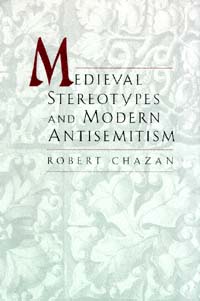 | Title: Medieval stereotypes and modern antisemitism Author: Chazan, Robert Published: University of California Press, 1997 Subjects: Medieval Studies | Jewish Studies | Medieval History | European History | European Studies Publisher's Description: The twelfth century in Europe, hailed by historians as a time of intellectual and spiritual vitality, had a dark side. As Robert Chazan points out, the marginalization of minorities emerged during the "twelfth-century renaissance" as part of a growing pattern of persecution, and among those stigmatized the Jews figured prominently.The migration of Jews to northern Europe in the late tenth century led to the development of a new set of Jewish communities. This northern Jewry prospered, only to decline sharply two centuries later. Chazan locates the cause of the decline primarily in the creation of new, negative images of Jews. He shows how these damaging twelfth-century stereotypes developed and goes on to chart the powerful, lasting role of the new anti-Jewish imagery in the historical development of antisemitism.This coupling of the twelfth century's notable intellectual bequests to the growth of Western civilization with its legacy of virulent anti-Jewish motifs offers an important new key to understanding modern antisemitism. [brief] Similar Items |
| 11. | 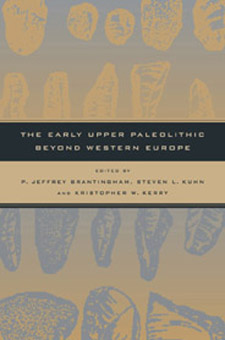 | Title: The early Upper Paleolithic beyond Western Europe Author: Brantingham, P. Jeffrey 1970- Published: University of California Press, 2004 Subjects: Anthropology | Archaeology | European History | European History | Middle Eastern History Publisher's Description: This volume brings together prominent archaeologists working in areas outside Western Europe to discuss the most recent evidence for the origins of the early Upper Paleolithic and its relationship to the origin of modern humans. With a wealth of primary data from archaeological sites and regions that have never before been published and discussions of materials from difficult-to-find sources, the collection urges readers to reconsider the process of modern human behavioral origins. Archaeological evidence continues to play a critical role in debates over the origins of anatomically modern humans. The appearance of novel Upper Paleolithic technologies, new patterns of land use, expanded social networks, and the emergence of complex forms of symbolic communication point to a behavioral revolution beginning sometime around 45,000 years ago. Until recently, most of the available evidence for this revolution derived from Western European archaeological contexts that suggested an abrupt replacement of Mousterian Middle Paleolithic with Aurignacian Upper Paleolithic adaptations. In the absence of fossil association, the behavioral transition was thought to reflect the biological replacement of archaic hominid populations by intrusive modern humans. The contributors present new archaeological evidence that tells a very different story: The Middle-Upper Paleolithic transitions in areas as diverse as the Levant, Eastern-Central Europe, and Central and Eastern Asia are characterized both by substantial behavioral continuity over the period 45,000-25,000 years ago and by a mosaic-like pattern of shifting adaptations. Together these essays will enliven and enrich the discussion of the shift from archaic to modern behavioral adaptations. [brief] Similar Items |
| 12. | 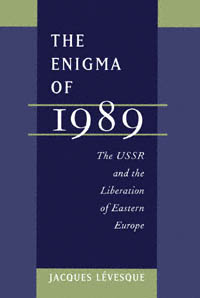 | Title: The enigma of 1989: the USSR and the liberation of Eastern Europe Author: Lévesque, Jacques Published: University of California Press, 1997 Subjects: Politics | History | European History | Russian and Eastern European Studies Publisher's Description: The Soviet external empire fell in 1989 virtually without bloodshed. The domino-like collapse of the communist regimes of Eastern Europe was not anticipated by political experts in either the East or the West. Most surprising of all was the Soviet Union's permissive reactions to the secession. For the first time in modern history, such an epochal upheaval could take place not only without war but also without major international tensions.This book is the first comprehensive scholarly attempt to elucidate Soviet behavior toward Eastern Europe in 1989. Jacques Lévesque thoroughly analyses the policies of the USSR toward Eastern Europe during the Gorbachev era and clarifies the goals that underpinned these policies.Based on interviews with political leaders and exhaustive research in Russia, Czechoslovakia, Hungary, Poland, and the other ex-Warsaw Pact countries, this book traces the nuances of each country's case as a set of continually changing, mutually reinforcing causes and effects. [brief] Similar Items |
| 13. | 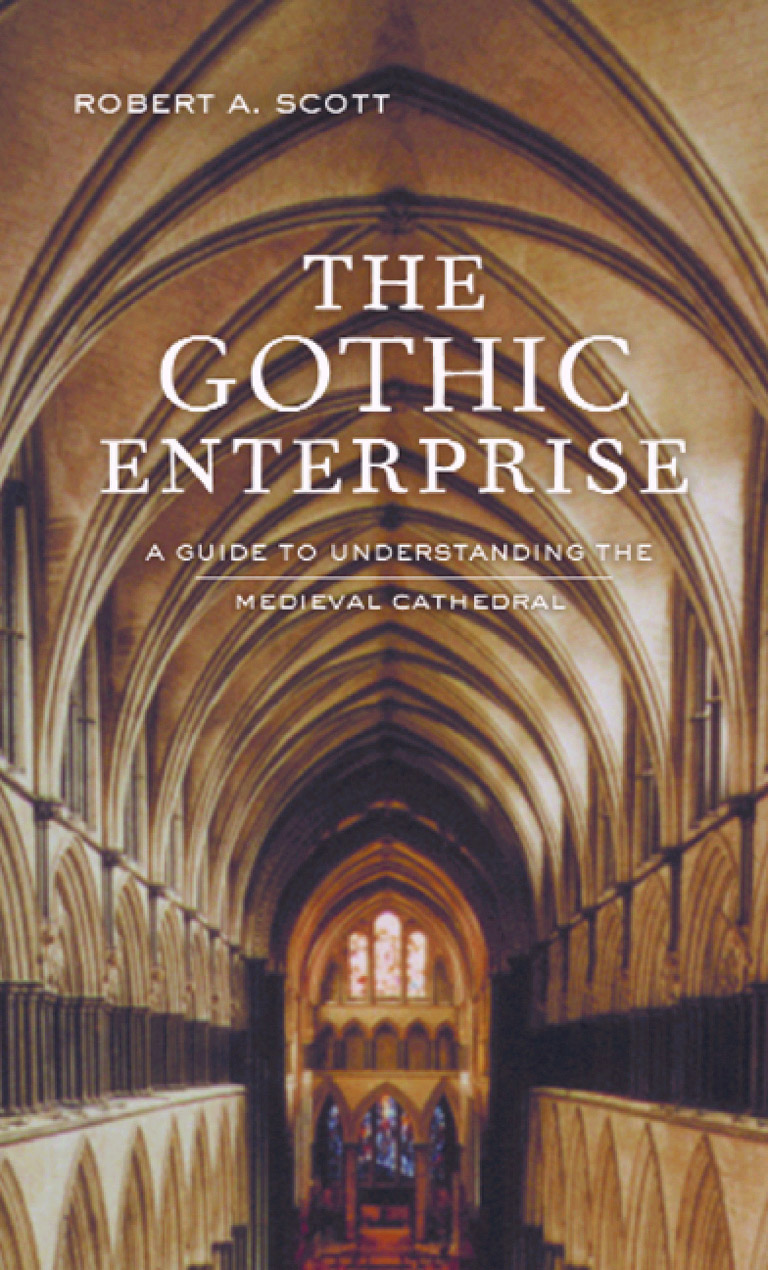 | Title: The Gothic enterprise: a guide to understanding the Medieval cathedral Author: Scott, Robert A 1935- Published: University of California Press, 2003 Subjects: Medieval Studies | Architecture | European Studies | Christianity | European History | Architectural History | Sociology | Sociology Publisher's Description: The great Gothic cathedrals of Europe are among the most astonishing achievements of Western culture. Evoking feelings of awe and humility, they make us want to understand what inspired the people who had the audacity to build them. This engrossing book surveys an era that has fired the historical imagination for centuries. In it Robert A. Scott explores why medieval people built Gothic cathedrals, how they built them, what conception of the divine lay behind their creation, and how religious and secular leaders used cathedrals for social and political purposes. As a traveler's companion or a rich source of knowledge for the armchair enthusiast, The Gothic Enterprise helps us understand how ordinary people managed such tremendous feats of physical and creative energy at a time when technology was rudimentary, famine and disease were rampant, the climate was often harsh, and communal life was unstable and incessantly violent. While most books about Gothic cathedrals focus on a particular building or on the cathedrals of a specific region, The Gothic Enterprise considers the idea of the cathedral as a humanly created space. Scott discusses why an impoverished people would commit so many social and personal resources to building something so physically stupendous and what this says about their ideas of the sacred, especially the vital role they ascribed to the divine as a protector against the dangers of everyday life. Scott's narrative offers a wealth of fascinating details concerning daily life during medieval times. The author describes the difficulties master-builders faced in scheduling construction that wouldn't be completed during their own lifetimes, how they managed without adequate numeric systems or paper on which to make detailed drawings, and how climate, natural disasters, wars, variations in the hours of daylight throughout the year, and the celebration of holy days affected the pace and timing of work. Scott also explains such things as the role of relics, the quarrying and transporting of stone, and the incessant conflict cathedral-building projects caused within their communities. Finally, by drawing comparisons between Gothic cathedrals and other monumental building projects, such as Stonehenge, Scott expands our understanding of the human impulses that shape our landscape. [brief] Similar Items |
| 14. | 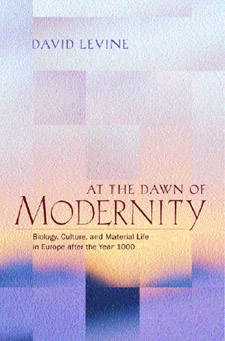 | Title: At the dawn of modernity: biology, culture, and material life in Europe after the year 1000 Author: Levine, David 1946- Published: University of California Press, 2001 Subjects: Sociology | Social Theory | European History | European Studies Publisher's Description: Looking at a neglected period in the social history of modernization, David Levine investigates the centuries that followed the year 1000, when a new kind of society emerged in Europe. New commercial routines, new forms of agriculture, new methods of information technology, and increased population densities all played a role in the prolonged transition away from antiquity and toward modernity. At the Dawn of Modernity highlights both "top-down" and "bottom-up" changes that characterized the social experience of early modernization. In the former category are the Gregorian Reformation, the imposition of feudalism, and the development of centralizing state formations. Of equal importance to Levine's portrait of the emerging social order are the bottom-up demographic relations that structured everyday life, because the making of the modern world, in his view, also began in the decisions made by countless men and women regarding their families and circumstances. Levine ends his story with the cataclysm unleashed by the Black Death in 1348, which brought three centuries of growth to a grim end. [brief] Similar Items |
| 15. | 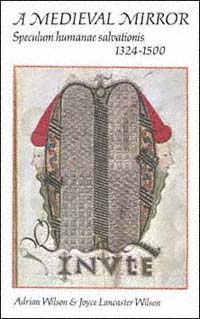 | Title: A medieval mirror, Speculum humanae salvationis, 1324-1500 Author: Wilson, Adrian Published: University of California Press, 1985 Subjects: Art | Architecture Publisher's Description: The Speculum Humanae Salvationis or "Mirror of Human Salvation," is the only medieval work that exists in illuminated manuscripts, in blockbook editions of the mid-fifteenth century, and in sixteen later incunabula. The authors have provided lavishly illustrated accounts of the manuscripts and inclu . . . [more] Similar Items |
| 16. | 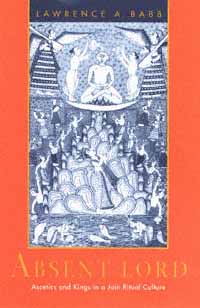 | Title: Absent lord: ascetics and kings in a Jain ritual culture Author: Babb, Lawrence A Published: University of California Press, 1996 Subjects: Religion | Asian Studies | Anthropology Publisher's Description: What does it mean to worship beings that one believes are completely indifferent to, and entirely beyond the reach of, any form of worship whatsoever? How would such a relationship with sacred beings affect the religious life of a community? Using these questions as his point of departure, Lawrence A. Babb explores the ritual culture of image-worshipping Svetambar Jains of the western Indian states of Gujarat and Rajasthan.Jainism traces its lineages back to the ninth century B.C.E. and is, along with Buddhism, the only surviving example of India's ancient non-Vedic religious traditions. It is known and celebrated for its systematic practice of non-violence and for the intense rigor of the asceticism it promotes. A unique aspect of Babb's study is his linking of the Jain tradition to the social identity of existing Jain communities.Babb concludes by showing that Jain ritual culture can be seen as a variation on pan-Indian ritual patterns. In illuminating this little-known religious tradition, he demonstrates that divine "absence" can be as rich as divine "presence" in its possibilities for informing a religious response to the cosmos. [brief] Similar Items |
| 17. | 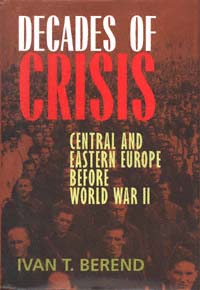 | Title: Decades of crisis: Central and Eastern Europe before World War II Author: Berend, T. Iván (Tibor Iván) 1930- Published: University of California Press, 1998 Subjects: History | European History | European Studies | Russian and Eastern European Studies | Economics and Business Publisher's Description: Only by understanding Central and Eastern Europe's turbulent history during the first half of the twentieth century can we hope to make sense of the conflicts and crises that have followed World War II and, after that, the collapse of Soviet-controlled state socialism. Ivan Berend looks closely at the fateful decades preceding World War II and at twelve countries whose absence from the roster of major players was enough in itself, he says, to precipitate much of the turmoil.As waves of modernization swept over Europe, the less developed countries on the periphery tried with little or no success to imitate Western capitalism and liberalism. Instead they remained, as Berend shows, rural, agrarian societies notable for the tenacious survival of feudal and aristocratic institutions. In that context of frustration and disappointment, rebellion was inevitable. Berend leads the reader skillfully through the maze of social, cultural, economic, and political changes in Hungary, Czechoslovakia, Yugoslavia, Poland, Romania, Bulgaria, Albania, Austria, Latvia, Lithuania, Estonia, and the Soviet Union, showing how every path ended in dictatorship and despotism by the start of World War II. [brief] Similar Items |
| 18. | 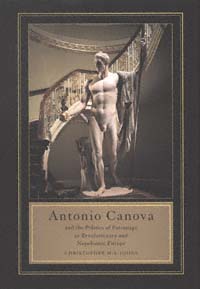 | Title: Antonia Canova and the politics of patronage in revolutionary and Napoleonic Europe Author: Johns, Christopher M. S Published: University of California Press, 1998 Subjects: Art | Art History | European Studies | European History Publisher's Description: The Venetian sculptor Antonio Canova (1757-1822) was Europe's most celebrated artist from the end of the ancien régime to the early years of the Restoration, an era when the traditional relationship between patrons and artists changed drastically. Christopher M. S. Johns's refreshingly original study explores a neglected facet of Canova's career: the effects of patrons, patronage, and politics on his choice of subjects and manner of working. While other artists produced art in the service of the state, Canova resisted the blandishments of the political powers that commissioned his works.Johns uses letters, diaries, and biographies to establish a political personality for Canova as an individual and an artist of international reputation. Though he had patrons as diverse as the pope, Napoleon, the Austrian Hapsburgs, the Prince Regent of Great Britain, and the Republic of Venice, Canova remained steadily employed and did so without controversy. A conservative and a Catholic, he devised a strategy that enabled him to work for patrons who were avowed enemies while remaining true to the cultural and artistic heritage of his Italian homeland. Using myth and funerary images and avoiding portraiture, he disguised the meanings behind his works and thus avoided their being identified with any political purpose.Johns greatly enhances our understanding of Canova's place in European art and political history, and in showing the influence of censorship, display, visual narrative, and propaganda, he highlights issues as contentious today as they were in Canova's time. [brief] Similar Items |
| 19. | 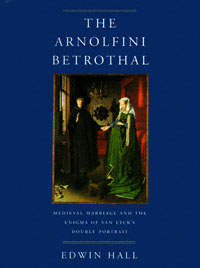 | Title: The Arnolfini betrothal: medieval marriage and the enigma of Van Eyck's double portrait Author: Hall, Edwin 1928- Published: University of California Press, 1997 Subjects: Art | Art History | Art Criticism | Medieval History Publisher's Description: Commonly known as the "Arnolfini Wedding" or "Giovanni Arnolfini and His Bride," Jan van Eyck's double portrait, painted in 1434, is probably the most widely recognized panel painting of the fifteenth century. One of the great masterpieces of early Flemish art, this enigmatic picture has also aroused intense speculation as to its precise meaning. Edwin Hall's accessible study - firmly grounded in Roman and canon law, theology, literature, and the social history of the period - offers a compelling new interpretation of this wonderful painting.Instead of depicting the sacrament of marriage, Hall argues, the painting commemorates the alliance between two wealthy and important Italian mercantile families, a ceremonious betrothal that reflects the social conventions of the time. Hall not only unlocks the mystery that has surrounded this work of art, he also makes a unique contribution to the fascinating history of betrothal and marriage custom, ritual, and ceremony, tracing their evolution from the late Roman Empire through the fifteenth century and providing persuasive visual evidence for their development. His illuminating view of Van Eyck's quintessential work is a striking example of how art continues to endure and engage us over the centuries. [brief] Similar Items |
| 20. | 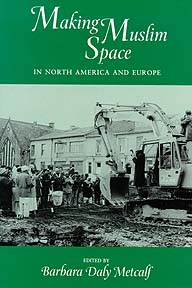 | Title: Making Muslim space in North America and Europe Author: Metcalf, Barbara Daly 1941- Published: University of California Press, 1996 Subjects: Anthropology | History | Islam | Middle Eastern Studies | Postcolonial Studies Publisher's Description: Focusing on the private and public use of space, this volume explores the religious life of the new Muslim communities in North America and Europe. Unlike most studies of immigrant groups, these essays concentrate on cultural practices and expressions of everyday life rather than on the political issues that dominate today's headlines. The authors emphasize the cultural strength and creativity of communities that draw upon Islamic symbols and practices to define "Muslim space" against the background of a non-Muslim environment.The range of perspectives is broad, encompassing middle-class professionals, mosque congregations, factory workers in France and the north of England, itinerant African traders, and prison inmates in New York. The truism that "Islam is a religion of the word" takes on concrete meaning as these disparate communities find ways to elaborate word-centered ritual and to have the visual and aural presence of sacred words in the spaces they inhabit.The volume includes 46 black-and-white photographs that illustrate Muslim populations in Edmonton, Philadelphia, the Green Haven Correction Facility, Manhattan, Marseilles, Berlin, and London, among other places. The focus on space directs attention to the new kinds of boundaries and consciousness that exist not only for these Muslim populations, but for people from all backgrounds in today's ever more integrated world. [brief] Similar Items |